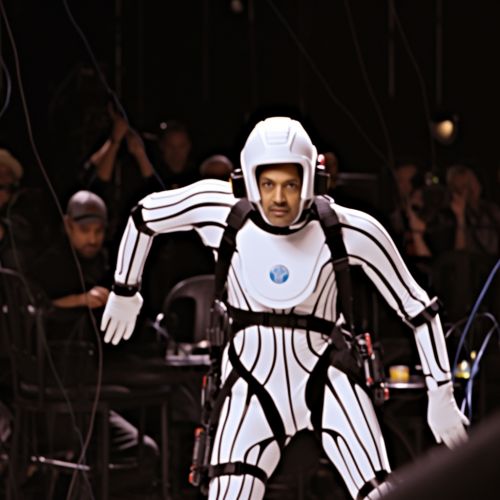Dance technology
Overview
Dance technology refers to the application of scientific and technological principles to the field of dance. This includes the use of computer science, engineering, and biomechanics to enhance, analyze, and document dance performance. Dance technology has significantly impacted the way dance is created, performed, and perceived, leading to new forms of artistic expression and methods of interaction between dancers and audiences.
History
The intersection of dance and technology can be traced back to the early 20th century, when artists began to experiment with film and photography to capture and manipulate dance performance. However, it was not until the advent of the digital age that dance technology truly began to evolve. The development of computer technology in the 1980s and 1990s, including the advent of computer graphics, motion capture, and virtual reality, opened up new possibilities for dance creation and performance.


Dance and Computer Technology
Computer technology has had a profound impact on dance. Choreographers now use software programs to create and visualize dance sequences, allowing them to experiment with movement and composition in a virtual space. This has led to the development of a new genre of dance known as digital dance, which incorporates digital technology into the choreographic process.
Motion capture technology, originally developed for the film and video game industries, has also been adopted by the dance community. This technology allows for the precise recording and analysis of a dancer's movement, providing valuable data for choreographers and dance researchers. In addition, motion capture can be used to create virtual dancers, which can be manipulated in ways that would be impossible for a human performer.
Dance and Engineering
The field of engineering has also contributed to the advancement of dance technology. Engineers have developed a variety of devices and systems to enhance dance performance and training. These include wearable technology, such as smart clothing and motion sensors, which can monitor a dancer's movement, heart rate, and other physiological data.
Engineering principles have also been applied to the design of dance floors and footwear. For example, biomechanical analysis can be used to create dance floors that reduce the risk of injury, while materials science can be used to develop dance shoes that provide optimal support and flexibility.
Dance and Biomechanics
Biomechanics, the study of the mechanical laws relating to the movement or structure of living organisms, has become an important tool in the field of dance. Biomechanical analysis can provide insights into the physical demands of dance, helping dancers to improve their technique and avoid injury. This can involve the use of motion capture technology, as well as other methods such as force plate analysis and electromyography.
Future Directions
The future of dance technology is likely to involve further integration of digital technology into the dance experience. This could include the use of virtual reality and augmented reality to create immersive dance performances, as well as the development of interactive dance systems that respond to the movement of the dancer. In addition, advances in artificial intelligence could lead to the creation of autonomous virtual dancers, capable of improvising and interacting with human performers.
